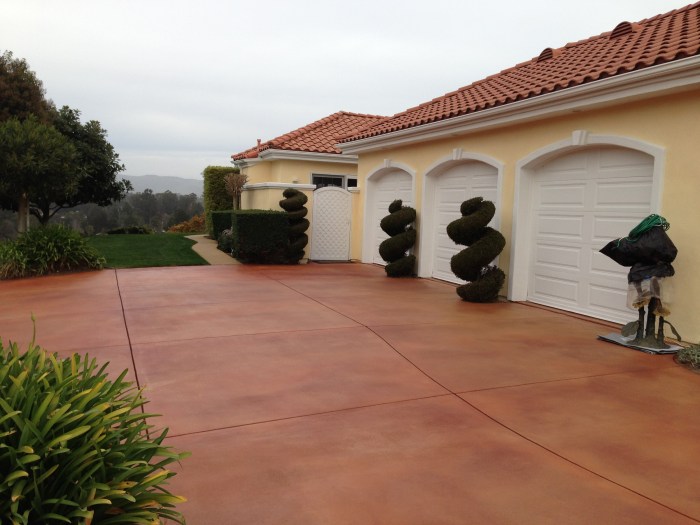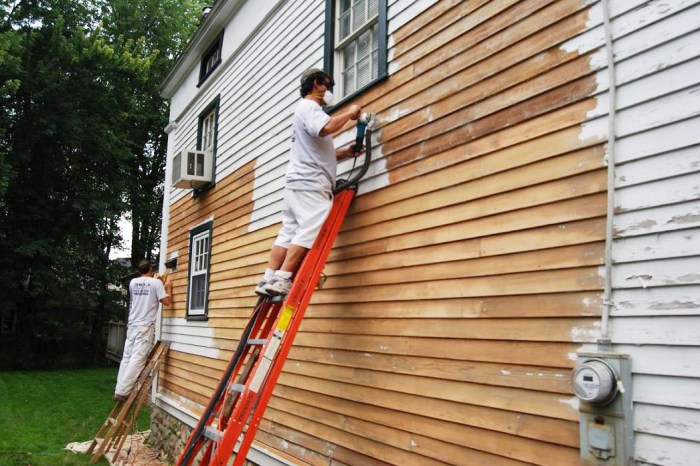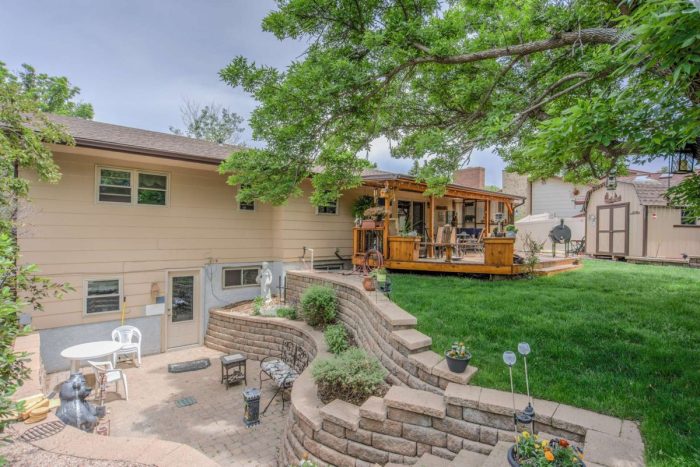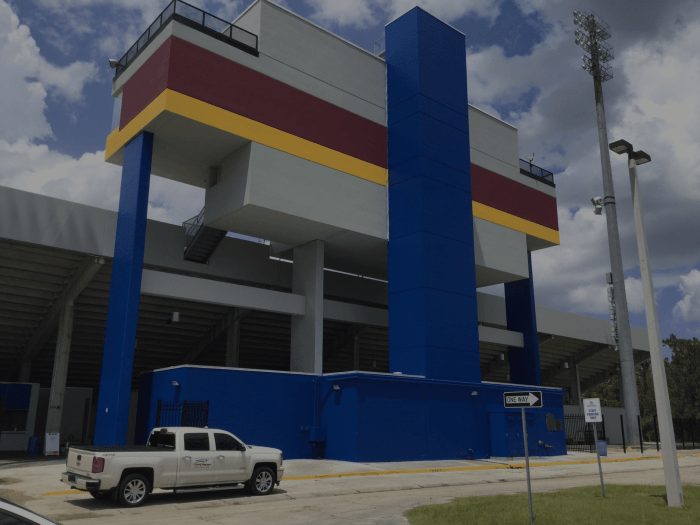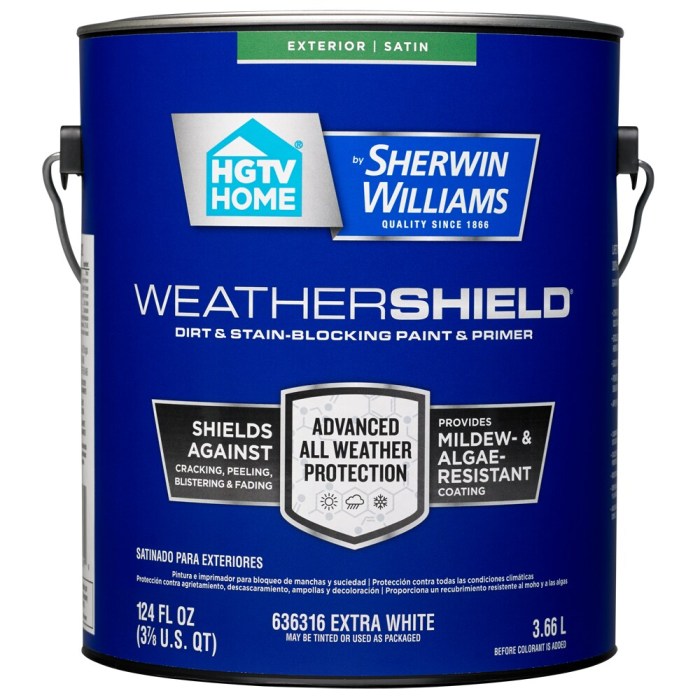Commercial Exterior Painting Cost Breakdown
Commercial exterior painting cost is a crucial factor for businesses. Factors like building size, material types, and accessibility all play a role in the final price. This overview explores the key elements impacting the cost, from preparation and techniques to labor and timelines, ensuring a comprehensive understanding of the project.
This analysis will cover everything from the initial cost estimations to the final budget, including potential contingencies for unexpected issues. We’ll delve into different painting techniques, their associated costs, and the importance of proper surface preparation. Understanding these details is essential for businesses planning exterior painting projects.
Factors Influencing Commercial Exterior Painting Costs
Commercial exterior painting projects for buildings involve a variety of factors that contribute to the overall cost. Understanding these factors allows for realistic budgeting and informed decision-making during the planning stages. Proper assessment of these variables is essential for achieving a successful and cost-effective project.
Surface Area and Building Materials
The size of the building’s exterior surface significantly impacts the total cost. Larger surface areas necessitate more paint, materials, and labor hours. The type of building materials also plays a crucial role. Older buildings might have unique or challenging surfaces like stucco, brick, or metal that require specialized preparation and materials, affecting the painting process and cost. These factors contribute to variations in the final painting estimate.
Accessibility and Weather Conditions
Accessibility to different parts of the building’s exterior greatly influences the labor costs. Buildings with intricate designs, multiple levels, or limited access points require more complex scaffolding setups and specialized equipment, driving up the price. Weather conditions are equally crucial. Extreme temperatures, rain, or high winds can delay or complicate the painting process, adding to the overall project duration and cost.
Building Age and Condition
The age and condition of a commercial building directly affect the cost. Older buildings may require more extensive preparation work, including repairs to damaged surfaces or removal of old paint layers, leading to higher labor costs. The condition of the existing paint, including signs of deterioration, mold, or mildew, will also influence the cost of the project, as these may require specialized cleaning and treatment.
Complexity of Building Design
The complexity of the building’s design significantly impacts the cost. Buildings with intricate architectural details, multiple levels, or unusual shapes often require more specialized techniques, potentially involving intricate scaffolding setups or custom painting methods, thereby increasing the overall cost. The complexity also affects the labor time and materials required for the project.
Type of Paint Used
The choice of paint directly affects the overall project budget. High-quality paints with enhanced durability or specific properties, such as mildew resistance or UV protection, usually command a higher price than standard paints. The desired finish (e.g., gloss, matte) also plays a role in the overall cost. Different paints have varying application methods, impacting the labor time and cost.
Examples of Commercial Buildings and Their Impact on Costs
Different types of commercial buildings have varying painting needs and costs. Warehouses, with their large, flat surfaces, might have lower painting costs per square foot compared to office buildings with intricate details and more complex access requirements. Retail stores often require careful consideration of the store’s facade and storefront designs, leading to unique considerations and higher costs for the painting project.
Summary Table of Factors
| Factor | Description | Impact on Cost | Example |
|---|---|---|---|
| Surface Area | Size of the building’s exterior surface. | Larger area = higher cost due to increased materials and labor. | A warehouse with 10,000 sq ft exterior vs. a small office building with 2,000 sq ft. |
| Building Materials | Type of materials (e.g., brick, stucco, metal). | Specialized materials or preparation = higher cost. | Painting a brick building vs. a metal building. |
| Accessibility | Ease of access to different parts of the building. | Limited access = higher cost due to specialized equipment or scaffolding. | Multi-story building vs. a single-story building. |
| Weather Conditions | Impact of temperature, rain, and wind. | Adverse weather = project delays and added costs. | Painting in winter vs. painting in summer. |
| Building Age/Condition | Age and condition of the existing paint and building. | Extensive repairs or preparation = higher cost. | A building with peeling paint vs. a recently painted building. |
| Design Complexity | Architectural details, multiple levels. | Intricate design = higher labor costs and specialized techniques. | A building with a complex facade vs. a simple rectangular building. |
| Paint Type | Quality and type of paint used. | High-quality paints = higher cost. | Using high-end exterior paint with special properties vs. standard paint. |
Painting Techniques and Their Costs
Commercial exterior painting projects employ various techniques, each influencing the overall cost. Factors such as building size, complexity, accessibility, and the desired finish all play a role in determining the most appropriate and economical method. Choosing the right technique is crucial for achieving high-quality results while managing expenses effectively.
Different Painting Techniques
Several techniques are employed for commercial exterior painting, each with its own set of advantages and disadvantages. These techniques vary in terms of accessibility, safety measures, and the complexity of the equipment required. The selection of the optimal method depends on the unique characteristics of the building, the desired level of quality, and the budget constraints.
Scaffolding
Scaffolding is a widely used technique for accessing higher elevations. It provides a stable platform for painters, enabling them to reach difficult areas and ensure even coverage. The cost of scaffolding depends on its size, complexity, and the duration of the project. For example, a large, complex scaffolding system for a multi-story building will incur significantly higher costs compared to a simple, temporary scaffolding for a single-story structure. Additionally, the setup and dismantling costs contribute to the overall expense.
Aerial Lifts
Aerial lifts, such as boom lifts or scissor lifts, offer a more versatile and efficient alternative to scaffolding. They provide a controlled platform for painters to work at various heights. The cost of aerial lifts varies depending on the lift’s capacity, reach, and the duration of rental. Rental costs are typically calculated based on hourly or daily rates, and higher-capacity lifts generally command higher rental fees. For instance, a construction company painting a high-rise building might opt for an aerial lift with a larger reach to minimize the number of setups and ensure faster completion.
Specialized Equipment
Specialized equipment, such as spray painting systems, can be used to accelerate the painting process. These systems often offer advantages in terms of efficiency and coverage, potentially leading to lower labor costs per square foot. However, the initial investment in the equipment can be substantial. For instance, a commercial painting contractor specializing in large-scale industrial buildings might invest in high-pressure sprayers for efficiency and cost-effectiveness. The cost of specialized equipment often includes maintenance, operator training, and potential repairs.
Paint Application Tools
The choice of paint application tools can significantly impact the final cost. Brushes, rollers, and sprayers each have varying degrees of efficiency and cost. Sprayers, while faster, require specialized training and can increase the cost if not used correctly. Brushes and rollers, on the other hand, might be more economical for smaller projects or areas with intricate details.
Safety Precautions and Cost Implications
Implementing robust safety measures is essential for any commercial exterior painting project. Safety equipment, such as harnesses, fall protection systems, and appropriate protective gear, is vital for worker safety. The cost of these safety measures should be factored into the overall project budget. For example, a painting company working on a high-rise building will need more comprehensive safety protocols and equipment, potentially increasing the project’s overall cost.
Comparison Table of Painting Techniques
| Technique | Description | Equipment Needed | Estimated Cost |
|---|---|---|---|
| Scaffolding | Stable platform for higher elevations. | Scaffolding structure, safety harnesses, fall protection. | Variable, based on size and duration. |
| Aerial Lifts | Versatile platform for various heights. | Boom lift or scissor lift, safety harnesses, fall protection. | Variable, based on lift capacity and rental duration. |
| Specialized Equipment (Spray Painting) | Accelerates painting process. | Sprayers, paint, safety equipment, training. | Variable, based on equipment type and usage. |
Preparation and Cleanup Costs
A significant portion of the overall cost for a commercial exterior painting project is tied to the preparation and cleanup phases. Thorough preparation ensures a quality finish, prolongs the paint’s lifespan, and prevents costly rework. Proper cleanup minimizes disruption to the surrounding environment and maintains a professional image. This section will detail the steps involved, their associated costs, and the importance of meticulous preparation.
Preparation Steps
Proper preparation is critical for a successful and lasting paint job. It involves several steps, each with a varying degree of cost. A well-executed preparation phase saves money in the long run by minimizing the need for touch-ups and repainting in the future. This section Artikels the key steps and their associated costs.
- Power Washing: This initial step removes loose debris, dirt, and grime from the surface. The cost of power washing varies based on the size of the building and the extent of the cleaning required. A typical cost range for power washing a medium-sized commercial building is $500-$1500, though this can fluctuate based on factors such as access difficulties or specialized cleaning requirements.
- Surface Repairs: Identifying and addressing issues like cracks, holes, or damaged sections is crucial. This often involves patching, caulking, or sanding. The cost depends on the extent of the damage and the materials used. Repair costs for minor damage could range from $200 to $800, while more significant repairs could exceed $1500.
- Masking: Protecting adjacent surfaces, landscaping, and windows from paint splatters is vital. This involves using masking tape, drop cloths, and other protective materials. The cost of masking is generally relatively low, ranging from $50 to $200, depending on the size and complexity of the project.
Debris Removal and Disposal
Effective debris removal and disposal are essential components of a commercial painting project. Incorrect disposal of materials can lead to fines and legal issues. This step involves collecting and transporting all waste materials, including old paint, debris, and masking materials. Disposal costs can vary based on local regulations and the volume of waste. A typical range for debris removal and disposal for a medium-sized commercial painting project is $100-$500.
Cleanup Methods
Careful cleanup is just as important as the preparation process. Proper cleanup methods minimize disruption to the surrounding area and ensure a professional image.
- Standard Cleanup: This involves removing excess paint, debris, and masking materials. The cost for standard cleanup is typically minimal, often included in the overall project cost.
- Specialized Cleanup: For projects with specific requirements, such as high-precision work or sensitive environments, specialized cleanup methods might be necessary. These could include detailed cleaning of specific areas or the use of specialized equipment. Costs for specialized cleanup will vary significantly based on the specific needs.
Importance of Surface Preparation
Proper surface preparation is the foundation of a successful exterior painting project. It ensures that the paint adheres correctly and lasts longer. A poorly prepared surface will likely lead to paint peeling, blistering, or premature failure. This directly impacts the overall cost-effectiveness of the project as it could result in additional repairs and repainting down the road.
Cost Breakdown Table
| Preparation Step | Description | Cost Range | Example |
|---|---|---|---|
| Power Washing | Removing dirt and grime | $500-$1500 | Washing a medium-sized commercial building |
| Surface Repairs | Addressing cracks and damage | $200-$1500+ | Patching holes and caulking cracks |
| Masking | Protecting surrounding areas | $50-$200 | Using tape and drop cloths |
| Debris Removal & Disposal | Collecting and disposing of waste | $100-$500 | Removing old paint and debris |
Labor Costs and Expertise
The cost of labor significantly impacts the overall price of commercial exterior painting projects. Understanding the factors influencing painter experience, team size, specialized skills, and regional variations is crucial for accurate cost estimations. This section delves into these key aspects, providing a comprehensive overview of labor-related expenses.
Experience Level and Cost
The experience level of the painting crew directly affects the price. Apprentices, with less training and fewer years of experience, tend to be less expensive than journeymen or master painters. Journeymen have proven their skills and possess a more extensive knowledge base, reflecting in higher hourly rates. Master painters, often recognized for exceptional craftsmanship and leadership within a team, command the highest rates. Their experience and expertise are valuable assets, ensuring the project’s quality and efficient completion.
Single Painter vs. Painting Team
Hiring a single painter for a small project can be cost-effective. However, for larger commercial projects, a painting team is often more efficient. A team can handle multiple tasks simultaneously, accelerating the project timeline and potentially reducing overall costs. The efficiency gains of a team often outweigh the increased initial cost. Estimating the precise project size and scope is vital in deciding whether a single painter or a team is the optimal choice.
Specialized Painters for Intricate Designs
For projects involving intricate designs or difficult-to-reach areas, hiring specialized painters is essential. These painters possess specific skills, tools, and techniques to handle complex architectural elements, like ornate trim work, curved surfaces, or high-level work. The cost of specialized painters is higher due to their advanced training and expertise. For instance, a painter specializing in murals or trompe-l’oeil designs will charge a premium over a general exterior painter.
Regional Variations in Labor Costs
Labor costs vary significantly across geographical regions. Factors like local living expenses, prevailing wage rates, and the availability of skilled labor in a particular area influence pricing. In high-cost-of-living regions, labor costs tend to be higher compared to areas with lower living expenses. A thorough understanding of local labor market conditions is vital for accurate cost estimations. For example, painting labor in major metropolitan areas like New York or Los Angeles will typically be more expensive than in smaller towns.
Importance of Licensed and Insured Contractors
Hiring licensed and insured contractors is crucial for legal protection and project security. Licenses ensure the contractor adheres to local regulations, while insurance protects against potential accidents or property damage during the project. Working with an unlicensed or uninsured contractor significantly increases risk. A licensed and insured contractor will have a track record of compliance with local regulations and the ability to handle potential issues effectively.
Comparison of Costs Based on Experience Levels
| Experience Level | Estimated Hourly Rate (USD) | Project Cost Considerations |
|---|---|---|
| Apprentice | $15-$25 | Lower cost but potentially longer project duration due to less experience. |
| Journeyman | $25-$40 | Balanced cost and experience. Often a good choice for many projects. |
| Master | $40-$60+ | Higher cost but often results in higher quality and faster completion. Expertise and quality craftsmanship are valuable. |
Note: These are estimated ranges and can vary significantly based on specific geographic locations and project requirements.
Project Timeline and Contingency
Commercial exterior painting projects, while seemingly straightforward, can be affected by various factors that influence the overall timeline. Understanding these variables is crucial for accurate cost estimations and successful project completion. A well-defined timeline, incorporating contingencies for potential delays, is vital for managing expectations and maintaining budget adherence.
Typical Project Timeline
A typical commercial exterior painting project, encompassing preparation, painting, and cleanup, often spans 2-4 weeks. This timeframe is a general guideline, and actual durations can vary significantly based on the project’s specifics. Factors like building size, complexity, weather, and the availability of necessary materials directly impact the project’s overall length.
Factors Impacting Project Timeline
Several factors can influence the duration of a commercial exterior painting project. Weather conditions, including unexpected rain or extreme temperatures, can significantly impact the painting process. These factors can necessitate postponements and alter the original schedule. Unforeseen issues, such as structural problems requiring repairs before painting or material shortages, can also disrupt the project timeline. Accurately assessing these potential disruptions is crucial for effective contingency planning. The complexity of the building’s exterior, including intricate architectural details or multiple facades, will also affect the project timeline.
Importance of Contingency Planning
Contingency planning is essential for mitigating the impact of unforeseen circumstances on project timelines and costs. It involves proactively identifying potential delays and developing strategies to address them. By incorporating buffer time into the schedule, project managers can accommodate unexpected challenges without jeopardizing the overall project completion date. This proactive approach allows for flexibility and ensures a more controlled and manageable project.
Calculating Potential Delays and Impact on Cost
Calculating potential delays and their impact on the final cost involves estimating the duration of the delay and its associated labor and material costs. For instance, if a two-day delay occurs due to rain, the cost of labor for those two days, along with any additional costs for materials or equipment rental, must be factored into the revised budget. This necessitates careful tracking of time spent on each task and potential delays.
Importance of Accurate Scheduling and Cost Control
Accurate scheduling is paramount for effective cost control. Detailed project plans, including task breakdowns, estimated durations, and resource allocation, are essential. Precise scheduling enables efficient use of labor, materials, and equipment, minimizing wasted time and reducing the risk of cost overruns. This meticulous approach ensures a more transparent and predictable project trajectory.
Potential Delays and Their Impact
| Potential Delay | Impact on Project Duration (Days) | Impact on Project Cost (Estimated) |
|---|---|---|
| Unexpected Rain | 1-3 | $500 – $1,500 (labor and material costs) |
| Material Shortages | 2-5 | $1,000 – $3,000 (material cost increase and potential labor costs) |
| Structural Issues Requiring Repairs | 5-10+ | $2,000 – $10,000+ (repair costs, painting costs, and potential project extension) |
| Subcontractor Delays | 1-5 | $500 – $2,500 (labor and material costs) |
This table illustrates potential delays and their corresponding impact on project duration and cost. These estimations are approximate and can vary based on the specific project details. It’s crucial to regularly assess the project’s progress and make necessary adjustments to the schedule and budget.
Estimating and Budgeting for Commercial Exterior Painting
Accurately estimating and budgeting for commercial exterior painting projects is crucial for successful project completion and client satisfaction. A well-defined budget allows for informed decision-making, proactive resource allocation, and the potential to mitigate unforeseen costs. A thorough understanding of the project’s scope, including materials, labor, and potential contingencies, is paramount for a realistic estimate.
Step-by-Step Guide for Estimating Costs
This systematic approach ensures a comprehensive cost analysis. Begin by meticulously surveying the entire exterior, noting the specifics of each surface area. Document the existing paint condition (e.g., peeling, chipping, or blistering) and the extent of surface preparation required. Next, consider the type of paint required and the quantity needed. Thoroughly research current market prices for the chosen materials and consider various brands to optimize costs without compromising quality. Evaluate the complexity of the project; this includes factors like building height, accessibility, and the presence of intricate architectural details. Estimating labor costs based on the project scope and the experience level of the painting crew is critical. Finally, factor in potential delays, weather contingencies, and any additional materials that may be required. These steps provide a solid foundation for an accurate and comprehensive estimate.
Sample Budget Template for Commercial Exterior Painting Projects
A well-structured budget template provides a clear framework for managing expenses. A template should include columns for specific project elements like materials, labor, preparation and cleanup, contingencies, and project management. Include rows for each cost component, providing a breakdown for easier comprehension. For example, categorize materials by type (paint, primer, sealant) and specify quantities. Similarly, categorize labor by tasks (surface preparation, painting, cleanup) and specify hours for each. Consistently record all expenses, receipts, and payments. This record-keeping ensures transparency and allows for efficient tracking of project expenditures.
Factoring in Project Variables for a Realistic Estimate
A realistic estimate must account for diverse project variables. Consider factors such as building size, the complexity of the exterior design, and the condition of the existing paint. The number of stories and the presence of balconies or other architectural details significantly influence the complexity and, consequently, the labor costs. Similarly, the existing paint condition, whether it’s in good shape or requires extensive prep work, significantly impacts the total cost. Consider potential weather delays, which could increase the project timeline and, in turn, the labor costs. These factors are essential for producing a comprehensive and adaptable estimate.
Essential Elements of a Comprehensive Painting Contract
A comprehensive painting contract is essential for clear communication and mutual understanding. The contract should clearly define the scope of work, including specific areas to be painted and the type of paint to be used. Detail the project timeline, including start and completion dates. Clearly Artikel the payment schedule, including down payments, milestones, and final payments. Specify the warranty on the work performed, outlining the conditions under which the contractor will rectify any defects. Include provisions for unforeseen circumstances, such as delays due to weather. This ensures that all parties are on the same page, minimizing potential disputes.
Best Practices for Managing the Project Budget Throughout the Painting Process, Commercial exterior painting cost
Effective budget management throughout the project ensures financial control. Regularly monitor expenses against the approved budget. Implement a system for tracking costs, ensuring that every expenditure is documented. Communicate any variances promptly with the client, providing explanations for any deviations. Negotiate with suppliers for favorable pricing on materials. Use a system for tracking progress, which helps maintain a clear overview of where the project stands. These practices facilitate successful project execution within budget constraints.
Sample Budget Breakdown by Category
| Category | Description | Estimated Cost |
|---|---|---|
| Materials | Paint, primer, sealant, brushes, rollers, drop cloths | $5,000 |
| Labor | Surface preparation, painting, cleanup, supervision | $8,000 |
| Contingencies | Unexpected costs, weather delays, material price fluctuations | $1,000 |
This table presents a sample budget breakdown, illustrating the relative proportion of costs in a typical commercial exterior painting project. Remember that these figures are estimates and may vary depending on the specific project requirements.
Concluding Remarks
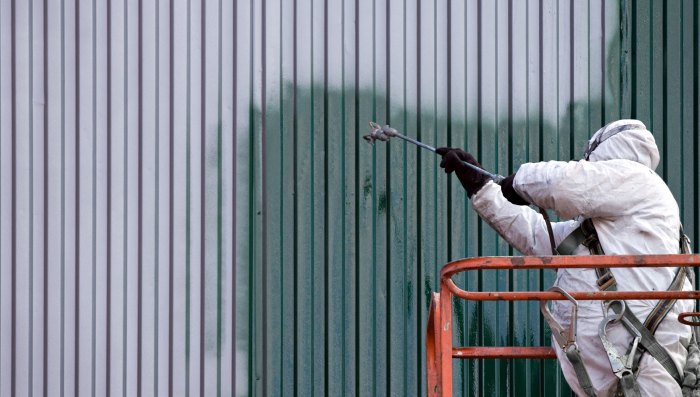
Source: wagnerandlambertpaintingllc.com
In conclusion, determining the commercial exterior painting cost involves a multifaceted approach. Careful consideration of various factors, from surface area and materials to labor costs and project timelines, is crucial for a realistic estimate. Proper preparation, skilled labor, and contingency planning are all essential components in achieving a successful and cost-effective project. By understanding the intricacies involved, businesses can make informed decisions and ensure a smooth and profitable exterior painting process.
